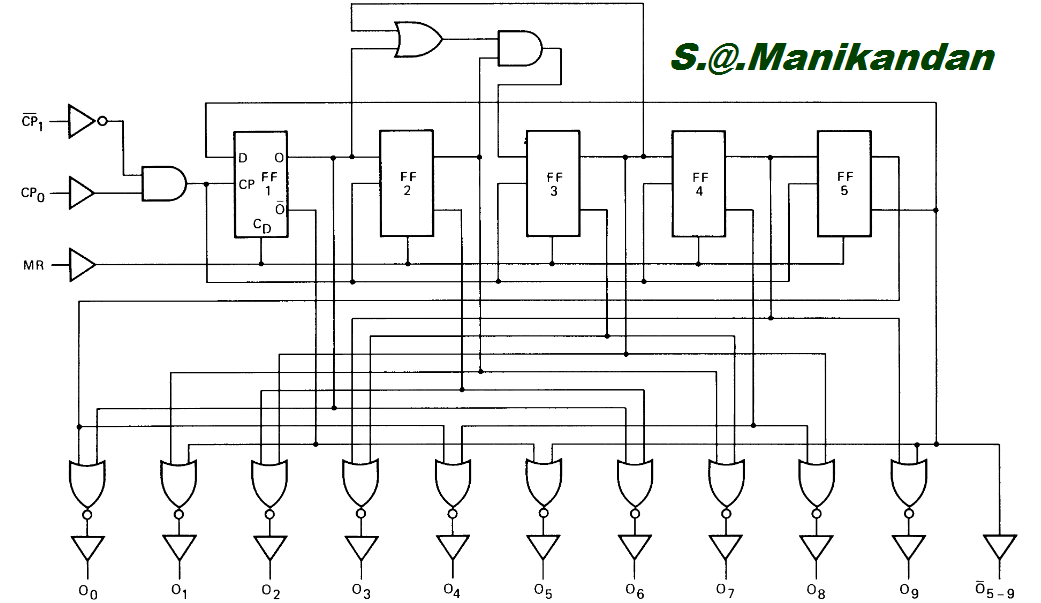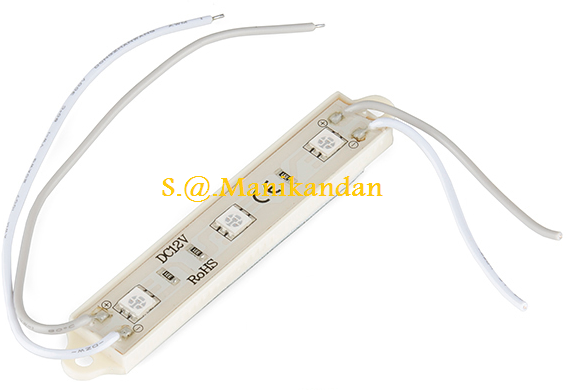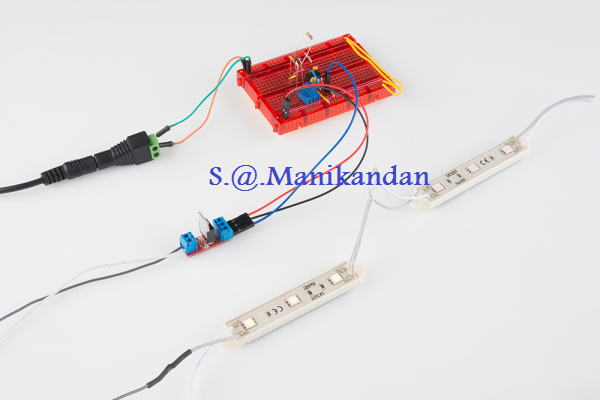Data IC
LA76931 Data Voltage
PIN 1. SIF OUTPUT 2.4V
PIN 2. IF AGC FILTER 0V
PIN 3. SIF INPUT 3.1V
PIN 4. FM FILTER 2.3V
PIN 5. FM OUTPUT 2.6V
PIN 6. OUTPUT AUDIO TO SOUND AMPLIFIER AUDIO 2.3VPIN 7. SND APC FILTER 2.3V
PIN 8. IF VCC 5V
PIN 9. EXT AUDIO IN 2.4V
PIN 10. ABL IN 3.7V
PIN 11. RGB VCC 8.4V
PIN 12. R OUTPUT 1.6VPIN 13. G OUTPUT 1.8VPIN 14. B OUTPUT 3.4VPIN 15. N.C
PIN 16. V.RAMP 2.1V
PIN 17. V.OUTPUT 2.6V
PIN 18. VCO I REF 1.5V
PIN 19. HORIZONTAL VCC 5V
PIN 20. AFC FILTER 2.6V
PIN 21. H.OUTPUT 0.7V
PIN 22. GND
PIN 23. MUTE 1.7V
PIN 24. N.C
PIN 25. N.C
PIN 26. I.R IN/SENSOR I.R IN 3VPIN 27. N.C
PIN 28. N.C
PIN 29. 2.9V
PIN 30. POWER ON/OFF ON 5V OFF 0V
PIN 31. SDA 4.8V
PIN 32. SCL 4.8V
PIN 33. XTALL IN 2V/32.768KHZ
PIN 34. XTALL OUT 3V/32.768KHZ
PIN 35. CPU VCC 5V
PIN 36. KEY IN/PANEL SWITCH 4.8V
PIN 37. VL 0V
PIN 38. VH 0V
PIN 39. UHF 5V
PIN 40. RESET 4.8V
PIN 41. PLL 3V
PIN 42. GND
PIN 43. CDD VCC 4.6V
PIN 44. FBP IN 0.5V
PIN 45. N.C
PIN 46. N.C
PIN 47. DDS FILTER 1.1V
PIN 48. N.C
PIN 49. 2.1V
PIN 50. XTALL 4.43 4V
PIN 51. CR.IN 2.3V
PIN 52. VIDEO OUTPUT 2.2V
PIN 53. APC FILTER 3.4V
PIN 54. EXT VIDEO IN 2.5V
PIN 55. VCC 5VPIN 56. V. IN TV 3.5V
PIN 57. BLACK STRETCH FILTER 2.3V
PIN 58. PIF APC FILTER 2.8V
PIN 59. AFT OUTPUT 0.2V
PIN 60. V.OUTPUT TV 3.5V
PIN 61. RF AGC TUNER 4V
PIN 62. GND
PIN 63. VIF IN2 2.9V
PIN 64. VIF IN1 2.9V
S.M.P.S Transistor
C4458 transistor
C3807 transistor
TV Dead-Repaired
Initial test: Television is totally dead.
I opened the
TV and went straight to the safety components; I
started with the main fuse, found to have had catastrophic failure that
even the glass part of the fuse was broken.
Once I found the fuse has died catastrophically, next I moved to check the state of the switching transistor.
Upon testing it with my digital meter
set to diode test, I got a beep either way, the resistance was near to zero.
Then I concluded this component has gone also-please note that if
this transistor short expects the fuse or the surge limiter to open.
To confirm the switching transistor was actually shorted I cut its
middle leg (collector) with a side cutter and tested across the C-E pins
again, there was still a beep (short indication)
Next I moved to the secondary side, I tested across the secondary
side diodes with the meter probe on one side and then reversed the
probe.
I noticed when testing across the main B+ diode rectifier there was a
beep either way, This is an indication that the actual diode is shorted
or a component along that line.
To confirm, I cut one leg of this diode and tested across it again I
got no beep. This confirmed to me that this diode is okay and therefore I
should concentrate on the component after this diode.
The main suspect now is after this diode is the H.O.T, testing across
the C-E junction of this transistor; I got beep on either way of the
meter probe.
Again I suspected it is the culprit, to confirm I cut the middle leg
from the circuit and upon testing the again the C-E pins with one leg
(collector) removed from the circuit, the transistor was found to be
okay.
Then I suspected the flyback as you can see from the above diagram it
is also on direct path with the suspect line (B+) and to be sure it was
the one shorted, I decided to remove it completely from the board.
This I did and after testing across the C-E (on the circuit track
with the middle leg of H.O.T transistor lifted up from the circuit
board) sadly I was again wrong. The short was still present.
So what next? I pulled my ESR meter to assist me to locate the shorted component.
With one probe of the ESR meter on the collector(C) pin of the HOT
transistor, I followed the circuit track from the pin E(emitter) and
going forward I noticed the ESR value was decreasing steadily and the
lowest reading was recorded at both legs of capacitor C416 which was
number 470p/2kV
I pulled my digital meter to confirm and indeed this capacitor was
dead short.
I soldered one of it leg out and testing again across the C-E
junction of the HOT, this time I never got the beep and this confirmed
to me that indeed this was the culprit.
I got another from the junk board and I replaced it, I also replaced
the switching transistor and re-installed the FBT and now was the time
to apply the power which of course was via the series bulb.
After applying the power I noticed the bulb was very bright and was
not going dim and this concluded to me that there is still a shorted
component.
I tested the voltage across the main capacitor and the reading was 64 vdc.
This could point to a problem with the diode rectifier and I tested
with a meter in diode mode and for sure I found one of the four (4)
diodes was shorted and replaced it.
I was now smiling because I figured that this is the end of this assignment but again I was wrong.
After replacing the diode I tested across the main capacitor and
still the voltage was very low and the series bulb was still very bright
which is still a sign of present of a shorted component on the supply.
So decided to do component by component testing for the entire primary side components.
From my experience I decided to start with all the diodes and all diodes were found to be healthy according to my digital meter.
Next I checked the transistors and I decided to start with the transistor C3807 which drive the switching transistor.
This transistor has its collector pin connected to the base of the switching transistor.
I tested between the C-E junction of this small transistor and I got a beep, I reversed the probe and still got a beep.
I guessed maybe it is because I am doing the testing in-circuit and
hence decided to remove this transistor out of the circuit and upon
testing it out of the circuit still there was a beep and therefore I
concluded the transistor is shorted.
I took another and replaced it and again applied power via the series bulb and this time the bulb was dim.
This confirmed to me that there is no other shorted component on the supply.
Later I went to the owner of this board and after re-installing the board back to the tube the
TVcame back to life.
Lessons learn: whenever you change the switching transistor kindly change the drive transistor also directly.
Usually when the switching transistor get shorted this small driver
transistor connected to its base short also or get a lot of stress and
therefore even if you find it okay it is a matter of time before it
succumb.
Conclusion: After doing replacement of all the parts in this
television
I figured out what could have really happened to cause this kind of
damage to these components and this is how I figured out to have
happened (postmortem).
First I suspect the problem started with small capacitor (470p/2kV) on the B+ line which developed a short.
After shorting the B+ voltage which is highly regulated at 109 VDC dropped drastically.
At this time the feedback circuit unaware of what has happened
communicated to the primary side that we need more voltage on the
secondary side and this then made the switching transistor to switch
very fast to correct the short fall in the B+ voltage…this transistor
was then overdriven and eventually surrendered (shorted), this also
affected the driver transistor and also got shorted.
All this time the main fuse was still hanging on and then next one of the diode rectifiers also got shorted.
After this the main fuse had no choice but to also give in and
because of many shorted component on the supply it has to go
catastrophically…and hence the power was cut from damaging more
components…the all process could have taken less than four (4) seconds.













































